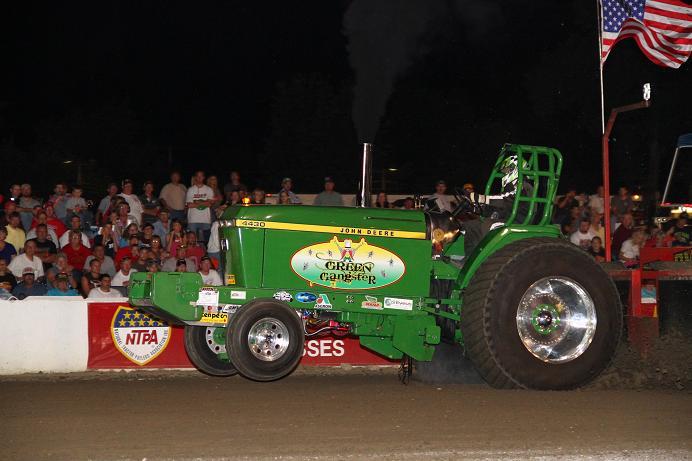National Tractor Pullers Association benefiting from biodiesel



Photo: National Tractor Pullers Association
May 24, 2011
BY Luke Geiver
In the past 20 years, the National Tractor Pulling Association has never seen as much excitement over a tractor pulling class as it did during the 2010 inaugural season for the Light Pro Stock class. Greg Randall, general manager for the NTPA, told Biodiesel Magazine that part of the reason for the excitement is based on the competiveness of the class, which allows more manufacturers a chance to provide their products to the race teams—but also because the class is powered by biodiesel.
The use of biodiesel “is something that can tie in well with someone sitting in the crowd that farms for a living and what they are seeing out there on the track,” Randall said. The NTPA’s use of biodiesel first started during a 2007 partnership with the United Soybean Board and has grown ever since, according the Randall. The Light Pro Stock class limits the tractor and everything else included to a weight of 8,500 pounds and a 540-cubic-inch limit on the engine size. “In most racing, it’s who crosses the finish line first. But, in the sport of truck and tractor pulling,” Randall said, “it’s who finishes furthest.”
A tractor in the Light Pro Stock Class can pull the “sled,” or weighted box, the length of a football field (including both end zones) in roughly 13 to 14 seconds. “They move down the track at a pretty fast speed,” Randall said. “They might have wheel speeds up to 75 to 80 miles per hour” before the weight of the sled hits them, at which time their top speed might be roughly 30 mph.
Advertisement
In tractor pulling, the worlds of rolling resistance (no friction) and non-rolling resistance are brought together, he explained. When the tractor hooks up to the weighted sled, the weight is still on a transfer system atop tandem axels. As the tractor moves down the track, the weight box shifts and slides towards the tractor off of the tandem axels until the tractor is pulling weight that is no longer “rolling.” Using biodiesel in the process, Randall said, operators are able to take advantage of added lubricity, but the point of biodiesel use and the partnership between USB and NTPA has changed over the years.
In the beginning, he said, the use of biodiesel was more of a tool to get farmers aware of the product and to support the industry that they were living in. “Now it’s kind of grown from that to showing the application of the fuel and translating the power and performance from the fuel onto the track.”
Advertisement
In 2010, roughly 15 teams competed in the Light Pro Stock class, but that number has already doubled. The biodiesel-powered tractors will compete this year in a region including Michigan, Illinois, Indiana and Ohio.
The partnership does not mandate the use of biodiesel by the drivers, but of the 10 winners from last year’s events, eight were using biodiesel, a number Randall expects to grow this year. The teams do not have to purchase biodiesel at the race facilities, but they do have to show proof of purchase and are also subsequent to normal fuel testing regulated by the NTPA.
While Randall believes that most teams are running blends of B5 to B20, he said it is hard to tell what the exact blend ratios of biodiesel are. To find that information out, he said, “You could probably bust into Fort Knox easier.”
Upcoming Events





